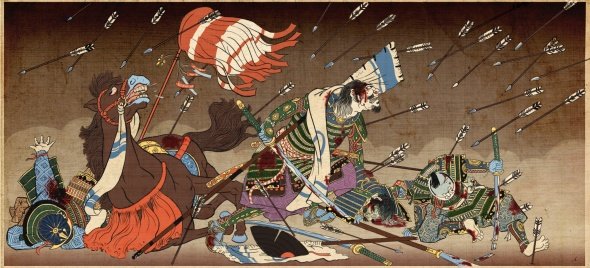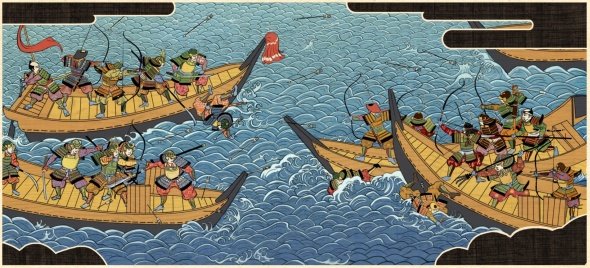Shogun 2: Total War preview - The master returns
“If you look at the historical things that some people did, they're absolutely outrageous,” says Simpson. He spends the meeting rocking his chair back on two legs, occasionally leaning in to underline a point. “Trying to fold that kind of flavour into the game is what it's all about. So you'll get guys like a general whose job it was to siege a castle and take it. He'd tried for six months and failed. His reaction to this was to commit suicide, which is a fairly outrageous thing, but he then had himself buried on his horse, facing the castle gate, so he'd haunt them to death. There are hundreds of episodes like that, where characters do something bizarre, outrageous, astonishing, treacherous – all sorts of things. What we aim to do is fold that flavour into solid mechanisms the player has control over.”
That begins with representing those siege battles. “Japanese castles are quite different from European castles,” Jamie says. “For Europeans, it really just was a set of walls that keeps everyone out, and you do your damndest to make sure they never got through the front door.” Not so for the Japanese, who would build their castles by chopping the top off a hill, cladding it in stone and building complex, layered forts on top.

“It would be a series of courtyards,” explains Mike. “Most of the castles would be designed like a wedding cake on different tiers, with quite complicated paths and lots of choice about which way you go. The perfect castle defence in Japan is almost to open the gates and say 'Come on in if you think you're hard enough.'”
No longer is it as simple as using a cannon to make a hole and pouring inside. By separating castles into football-pitch size courtyards, Japanese sieges turn into multi-stage puzzles. Cavalry units remain useful even when inside the outer walls, attackers have to pick their route carefully, taking the shortest path to wiping out the enemy, while the defenders decide which courtyards are worth protecting and try to force the attackers towards the castle's most protected walls.
There's now an ebb and flow to battles. “When he takes a courtyard, you'll have to fall back and defend from there,” continues Mike. “And depending on which way he goes from there, because he might go left, he might go right, you'll have to run round to counter that. It's just a lot more choice.”

“It's about providing different ways of winning the battle, and the narrative throughout the siege battle, rather than a focus on the bombardment phase and then a big mosh,” adds Russell. A lot of my questions get answered this way, with all three men finishing each others' ideas and debating what they can say. They're Total War's own Cerberus, guarding the game's secrets.
Representing siege warfare to its fullest allows the designers to represent specific historic battles, such as the Battle of Kawagoe, in which the Uesugi and Hojo clans fought. “The Hojo had been completely surrounded in their castle,” says Ferguson. What makes the battle significant is that the Hojo were only 10,000, and the enemy outside the gates had around 85,000. “The Uesugi had been besieging it for a couple of weeks, but then the leader of the Hojo clan actually attacked in the middle of the night, in a storm, and completely annihilated the Uesugi.”
The biggest gaming news, reviews and hardware deals
Keep up to date with the most important stories and the best deals, as picked by the PC Gamer team.

